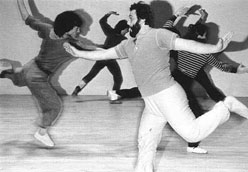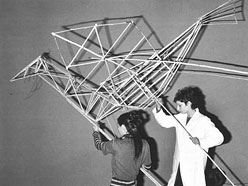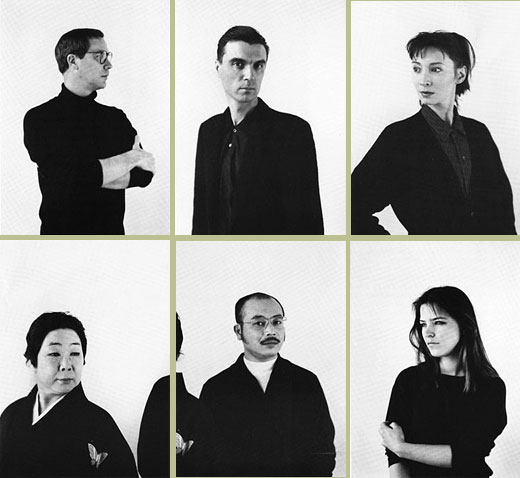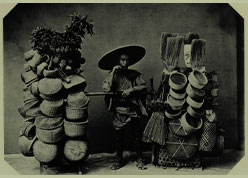

THE CIVIL WARS: THE AMERICAN SECTION
The Movement
The choreography has been developed during the Minneapolis workshop by Suzushi Hanayagi, one of Japan’s foremost classically trained Kabuki dancers. Miss Hanayagi brings to the Knee Plays both formal traditions of ancient Japanese dance and contemporary aesthetics. During a decade in New York in the 1960s she collaborated with founders of American post modern dance at the Judson Dance Theater: Trisha Brown, Ann Halprin, Carla Blank and, later, Elaine Summers.
The movement for the Knee Plays serves a functional as well as aesthetic purpose. The objects presented on stage are, in essence, the characters of the plays. The tree, the boat, the bird, the lion and the golden puppet are the focus of attention. Their deployment creates the story. The dancers, serve the purpose of animating these objects in much the same way as the puppeteers in Bunraku breathe life into wood and cloth dolls. The dancers, also, serve to locate and move stage properties as do the kurogo (black-clad stage hands) in Kabuki. Kuro, “black” in Japanese, signifies invisibility. In the conventions of Kabuki the kurogo, though in plain view, are “unseen” by the audience. In the Knee Plays, the backdrop is white, and so here the dancers are dressed in white, a departure allowed in Kabuki for snowy scenes and the like.
The formal elegance and stylization of Japanese traditions is blended with the language of American minimalism which evolved during the days of the counter-culture and derived much from Asian music and philosophy.
The Sets
The designs emerged from Wilson’s early concept drawings. During the Tokyo workshop of April, 1983, the ideas were completed and meetings were held with the set designer, Jun Matsuno, who would execute the technical drawings and oversee the construction of the sets for both the Knee Plays and the Japan section. Matsuno’s work with the stage designer Setsu Asakura and his designs for touring productions of the Bunraku puppet theater have afforded the production of the Knee Plays both artistic and technical expertise.
The sets are constructed of interlocking cubes of corrugated board with muslin wrapping, shoji screens of pine and fabric and detailed figures constructed of bamboo, copper, fabric and papier maché. Several of the elements are constructed so that sections of one become parts of another, furthering the audience’s perception of magic transformation. Visually, several of the units (the tree, the boat, the cabin and the library, for example) echo both the simplicity of Japanese design and the modular rigor of American minimalist sculpture.
the Knee Plays for the CIVIL warS, reflects a joining of cultures, particularly, those of Japan and America. The plays’ poetic visions, their dance and design, suggest the rich exchange between these two countries. As well, they form the weft of the fabric woven in the overall tapestry of a complex opera.
— Robert Stearns
 clockwise from top left: Robert Wilson, David Byrne, Adelle Lutz, Suzushi Hanayagi, Jun Matsuno, and Julie Archer. Portraits by JoAnn Verburg
clockwise from top left: Robert Wilson, David Byrne, Adelle Lutz, Suzushi Hanayagi, Jun Matsuno, and Julie Archer. Portraits by JoAnn Verburg
